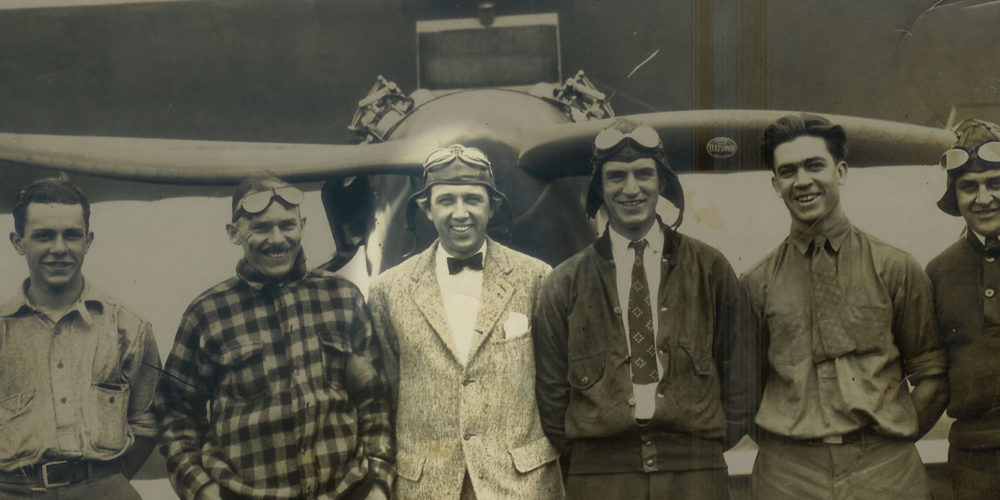Alumnus Bill Goebel spent six months combing the social pages of digital newspaper archives, and scanning census reports, ancestry websites, court records and other public sources to compile the following treatise on Embry-Riddle’s little-known namesake, co-founder and financier Talton Higbee “T. Higbee” Embry.
Do you ever have random thoughts? I do. I recently pondered: Wouldn’t it be novel to fly from one Embry-Riddle founder’s gravesite (John Paul Riddle) to the other’s (T. Higbee Embry)? I wondered how long a flight that would be.
With help from the internet, I discovered that portions of John Paul Riddle’s ashes were at various locations, including scattered over the Atlantic Ocean and at a graveyard in Arcadia, Florida — down the road from Embry-Riddle’s former World War II flight training facility at Carlstrom Field.
The burial marker in Arcadia would make a good enough starting point for Riddle. One down, one to go.
I entered “T. Higbee Embry grave” into my internet search engine. Nothing. Nada. Zip. Many online entries uniformly summarize T. Higbee as a “successful business man who co-founded the Embry-Riddle companies.” Period. Not only could I find nothing regarding his burial plot, I also couldn’t find much of anything on the man himself.
I dug deeper and found some information on Talton Embry, T. Higbee’s father. A point of clarification: The Embry family apparently liked the name Talton, a lot. I’m pretty sure there was a Talton Embry for at least six generations of the family. To avoid confusion, I’ll refer to our Embry-Riddle founder as T. Higbee, and to his father as Talton.
The Embry Family Empire
Talton originally hailed from Kentucky and established himself in the Cincinnati, Ohio, area as a livestock merchant. He had interests in numerous stockyards in the United States, as well as in Cuba and Brazil, and was regarded as one of the “best authorities” on livestock in the United States. In addition, he established numerous business ventures such as banks and hotels. Talton was also one of the first Americans to conduct sugar refining in Mexico, where he owned several plantations.
Talton married Susan Higbee of Fort Worth, Texas, in April of 1895. Two years later, T. Higbee, our founder, was born in Cincinnati on May 17, 1897.
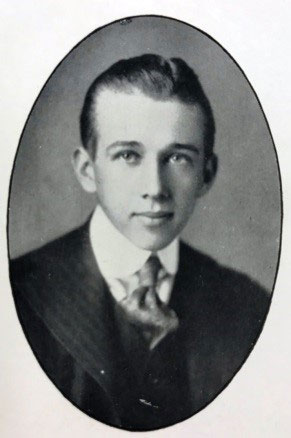
The Embry family was among the financial royalty of Cincinnati. Groomed to assume the reins of his father’s livestock trading empire, T. Higbee received the finest education of the time. He attended Asheville School in North Carolina, a private college-preparatory boarding school for grades 9-12, and graduated in June 1916.
And then, his world fell apart.
Tragedy Times Two
On July 9, 1916, Talton passed away at home at the age of 56. Shortly thereafter, his estate was divided between his wife Susan, his son T. Higbee, and numerous nieces and nephews to varying levels. When the dust settled, 19-year-old T. Higbee had inherited a trust held in his name worth more than $250,000 (adjusting for inflation, that’s nearly $6 million in 2018). The trust stipulated lump payments be parsed to T. Higbee as he reached the ages of 21, 25, 30 and 35.
T. Higbee continued working at his father’s livestock firm, Greene, Embry & Company, but in December 1916 (just five months later), tragedy struck again.
T. Higbee was involved in a nighttime automobile accident that killed a 10-year-old girl and wounded another young girl. Court filings from February 1917 document that charges and exemplary damages in excess of $45,000 were considered against T. Higbee. And, because he was not of “legal majority,” age 21 for Ohio, the vehicle owner and responsible party, his mother Susan Embry, was also sued for another $40,000.
At the time, T. Higbee was only 19; he did not yet have access to his trust fund. The outcome of the lawsuit is unclear. I can only assume that T. Higbee’s mother paid the damages and fines. I’d like to think that a conversation followed, where she encouraged her son to “grow up and get out of Cincinnati while this whole mess cools down.”
I do not know if military service was a condition of the legal settlement, but in August 1917, T. Higbee mustered into the Ohio National Guard’s 37th Division, 136th Field Artillery, Battery E. In September, he started training at Camp Sheridan in Alabama.
Call to Duty
In June 1918, he traveled to New York for embarkation to France, to fight in the Great War. Once there, he manned 155mm Schneider Howitzer guns with a maximum range of 7 miles. T. Higbee was manning his gun on Nov. 11, 1918, when at 11 a.m., the guns were ordered silenced and he was witness to an eerie but welcome quiet: the armistice.
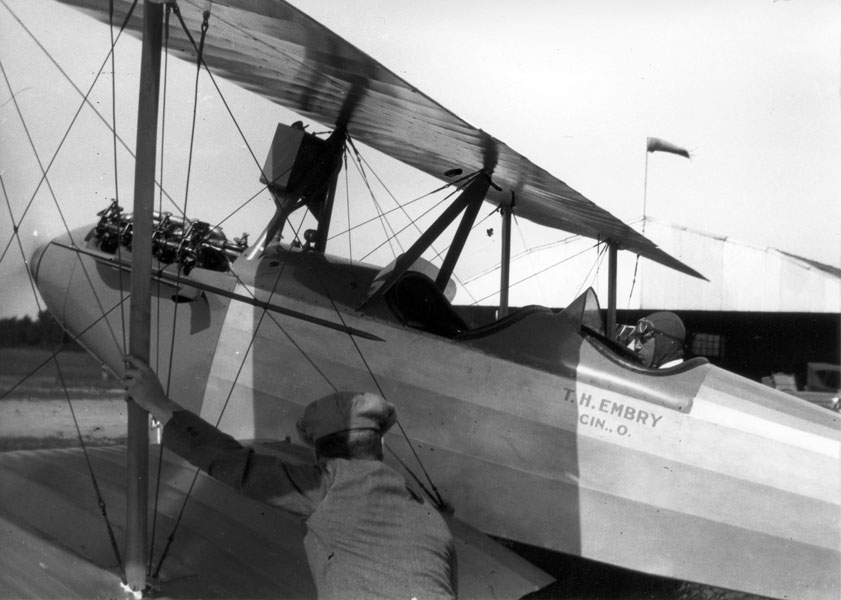
In a letter penned to his alma mater, published in The Asheville School Review in February 1919, he wrote:
… [On] October 29th we pulled out at night (when most artillery moves) and went to the highest point on the western front, Bois Thilot, which is south of Verdun. There we stayed and fired in barrage fires, for the defense of the American Infantry, until November 11th, and on the exact hour and minute all guns shut down. The noise ceased and not a shot was fired for the first time in almost five years. But many Americans lost their lives during the last few minutes of the World War. My luck was with me and I was not touched, although exposed to shell fire and gas more than once.”
T. Higbee returned stateside in March 1919. He was discharged as a Private First Class the next month in Cincinnati.
In June 1919, T. Higbee married Mary Elizabeth Bennett from Cincinnati, and they settled in the Hyde Park area. The following year, their son was born. That’s right, Talton Higbee Embry Jr. He would go by the name Tally.
Aviation Disruption
From 1919 to 1923, the family enjoyed an occasional garden party, trip to the opera and visits to the family’s summer cottage in Michigan. In 1923, disruption hit. Something startling came out of the clear blue sky, literally — that something was John Paul Riddle.
Prior to 1925, the majority of flying in Cincinnati took place at Grisard Field, which was located 8 to 10 miles northeast of downtown. It was here that T. Higbee first met Riddle. Riddle had been flying across the northeast United States, barnstorming after the war and offering rides in his Curtiss Jenny.
After just one flight with Riddle, T. Higbee was hooked. This was the beginning of a relationship that gained T. Higbee his flying credentials and led to the eventual joining of the Embry and Riddle names.
From 1923 to 1925, Riddle taught T. Higbee how to fly. In addition, the two became friends and threw their energies into all things aeronautical.
While Grisard Field offered decent flying facilities, it was deemed by Cincinnati’s aviation set to be too far from downtown to support the growing aviation industry. A low-lying flat area called Turkey Bottoms, just east of Cincinnati, caught the eye of our founders and Eshelby Lunken, who was part owner of Grisard Field. Lunken purchased the land from the Cincinnati Polo Club in 1925, and a new airport was created: Lunken Field. The Lunken family later deeded the airfield to the city of Cincinnati.
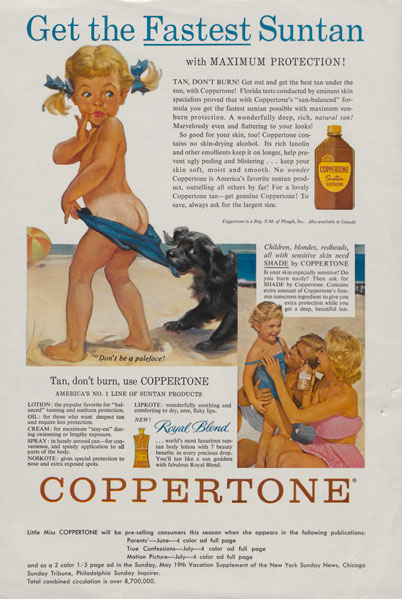
Did You Know?
T. Higbee Embry’s late son, Tally Embry, established the Tally Embry advertising agency in Coral Gables, Florida. His agency is credited with designing the popular Coppertone girl character and ad campaign for Coppertone tanning cream.
The principle point in mentioning the airfield is that in December 1925, it became home to the newly formed Embry-Riddle Company. These were exciting times.
Business plans, aircraft procurement and flying consumed T. Higbee’s days — all of this while still maintaining some semblance of a role at Greene, Embry & Company. With this tempo something had to give. In April 1926, Mary Bennett Embry was granted a divorce and received full custody of their son Tally.
Airspeed Ahead
In 1926, the Embry-Riddle Company was expanding into all facets of aviation: flight training, aerial photography, passenger flights and aircraft sales. In addition, the company sponsored a free Air Circus for the citizens of Cincinnati, with T. Higbee as one of the featured pilots performing parachutist drops and aerobatics.
Also in 1926, the Embry-Riddle Company sponsored the Ford Reliability Tour on its stopover in Cincinnati. As a Waco aircraft dealer, the company entered a Waco in the tour. Riddle was the pilot and none other than T. Higbee’s mother was the passenger. She was the first female to be flown in the tour. In 1927, Riddle competed, again in a Waco, in Ford’s National Air Tour. He came in seventh place.
In February 1927, T. Higbee married Ruth Miller, but this didn’t slow his business activities. Later that year, the Embry-Riddle Company was awarded the CAM 24 airmail route, which allowed its aircraft to carry passengers and mail from Cincinnati to Chicago.
In September 1928, the company published its first issue of Sky Traffic, a company newsletter, to help promote its aviation businesses. T. Higbee had a column in each issue. See sidebar to view archival issues of Sky Traffic.
Sold Out
In April 1929, the Embry-Riddle Company was sold to the Aviation Corporation (AVCO) conglomerate. Timing is everything. The stock market crash occurred in October.
T. Higbee and Riddle remained officers of the Embry-Riddle Aviation Corporation division at AVCO until 1932, when AVCO combined its assets under the American Airways moniker (the predecessor of American Airlines).
Now, at age 35, T. Higbee’s active run in the aviation business had come to an end and his passion for the livestock business had long since passed. His mother had previously moved to Los Angeles. With no binding attachments to the Cincinnati area, he followed her there in 1932.
Sadly, a year later, Susan Higbee Embry died in Los Angeles during a medical procedure.
Trading the Air for the Sea
It didn’t take long for T. Higbee to become involved in the Los Angeles-area country club set and to trade his penchant for air travel for that of the sea. In 1934, he purchased a 75-foot motor yacht and was named Commodore of the Balboa Yacht Club in Corona del Mar, California. He held this position for two years. He also sponsored the Embry Trophy, aka Southern California Power Boat Trophy (400-mile race).
T. Higbee divorced his second wife Ruth in 1938, and in 1940, he married wife No. 3, Gertrude Anderson from Dayton, Ohio.
At about this same time (1939), Riddle revived the Embry-Riddle Company in Miami, Florida. T. Higbee reportedly gave Riddle permission to use his name but was otherwise uninvolved in the venture. In October 1939, Riddle partnered with attorney John McKay and established the Embry-Riddle Seaplane Base and flight training facility. This is where our university’s modern history begins.
It’s important to note that T. Higbee and Riddle were cut from different cloths. T. Higbee was a businessman who learned to fly. Riddle was a flyer who learned how to run a business. Without combining forces, though, neither of these individuals would have built the organization and legacy that is Embry-Riddle.
Resting Place Found
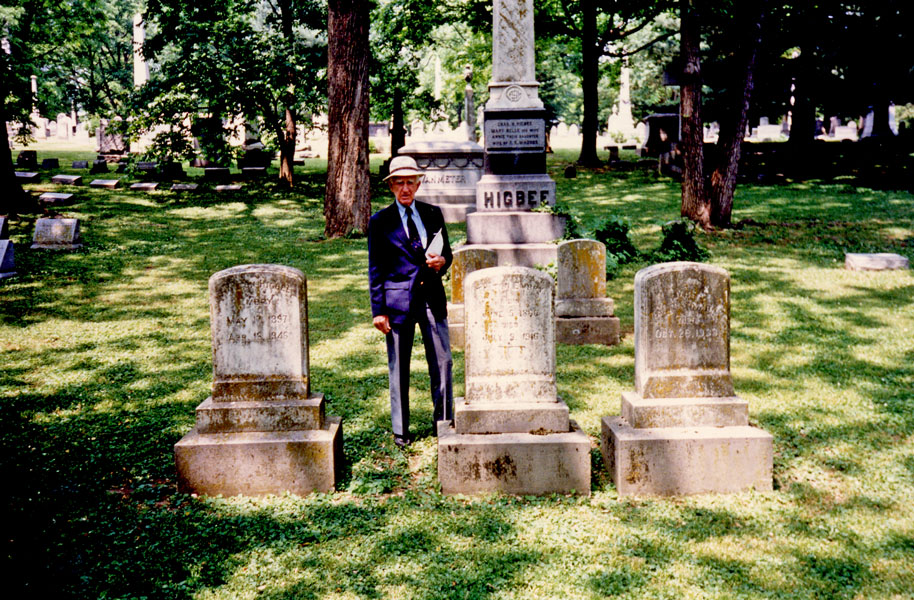
On April 17, 1946, T. Higbee passed away at the age of 49.
Oh, and I did locate his final resting place. T. Higbee is buried in the Lexington Cemetery in Lexington, Kentucky, right next to his parents, and his son, Tally, who died April 24, 1993.
Let’s see now … a flight from Arcadia Municipal Airport, Florida (X06), to Lexington, Kentucky (KLEX), is only 665 nautical miles. That’s not too bad a trip in a Cessna.
Editor’s Note: The author is a 1982 graduate of the Daytona Beach Campus and the Federal Aviation Administration Organization Designation Authorization Certification Projects Manager for Airbus Helicopter, based in Grand Prairie, Texas.
